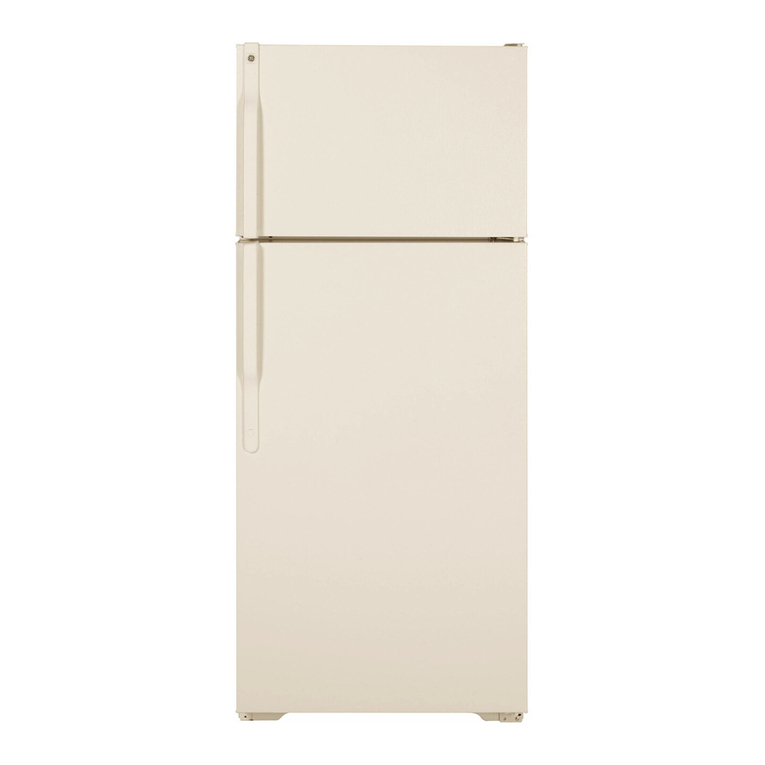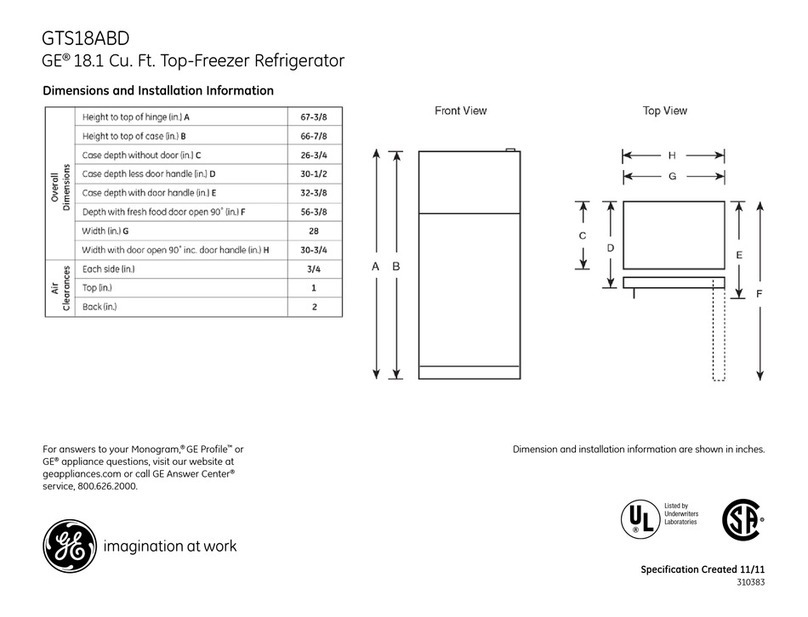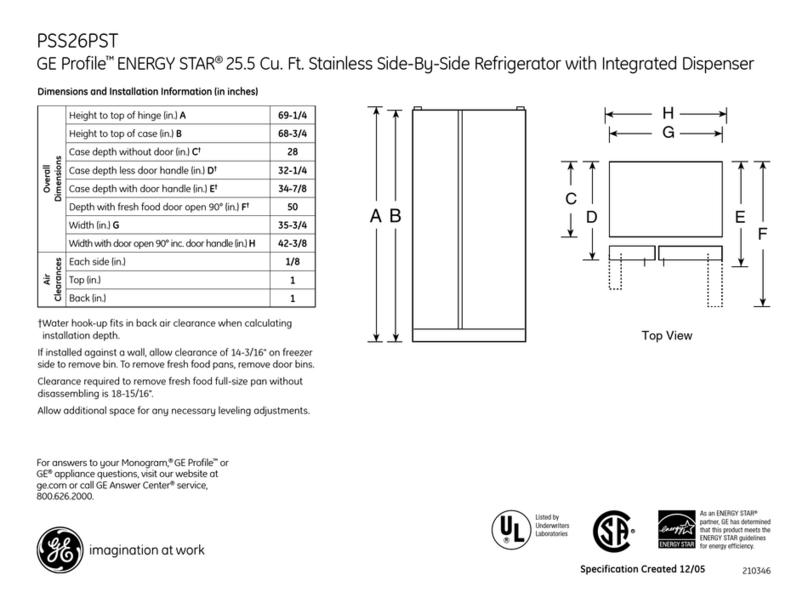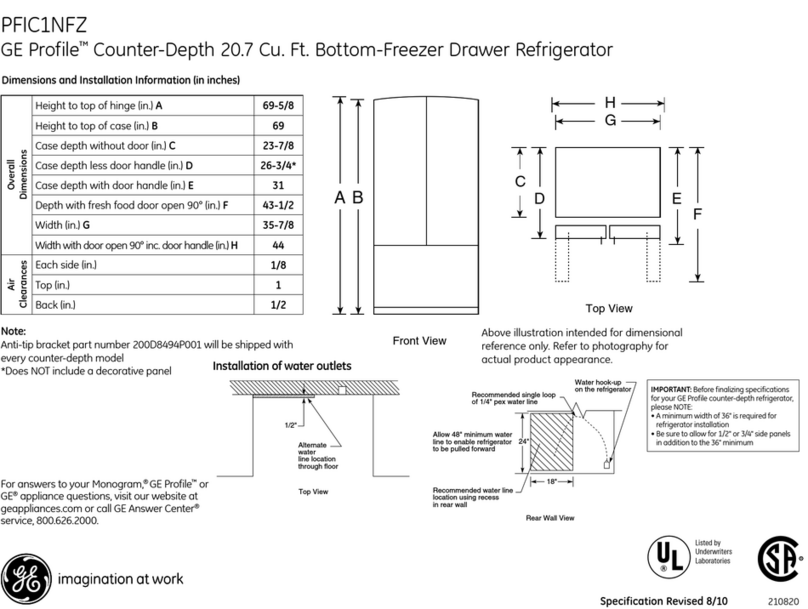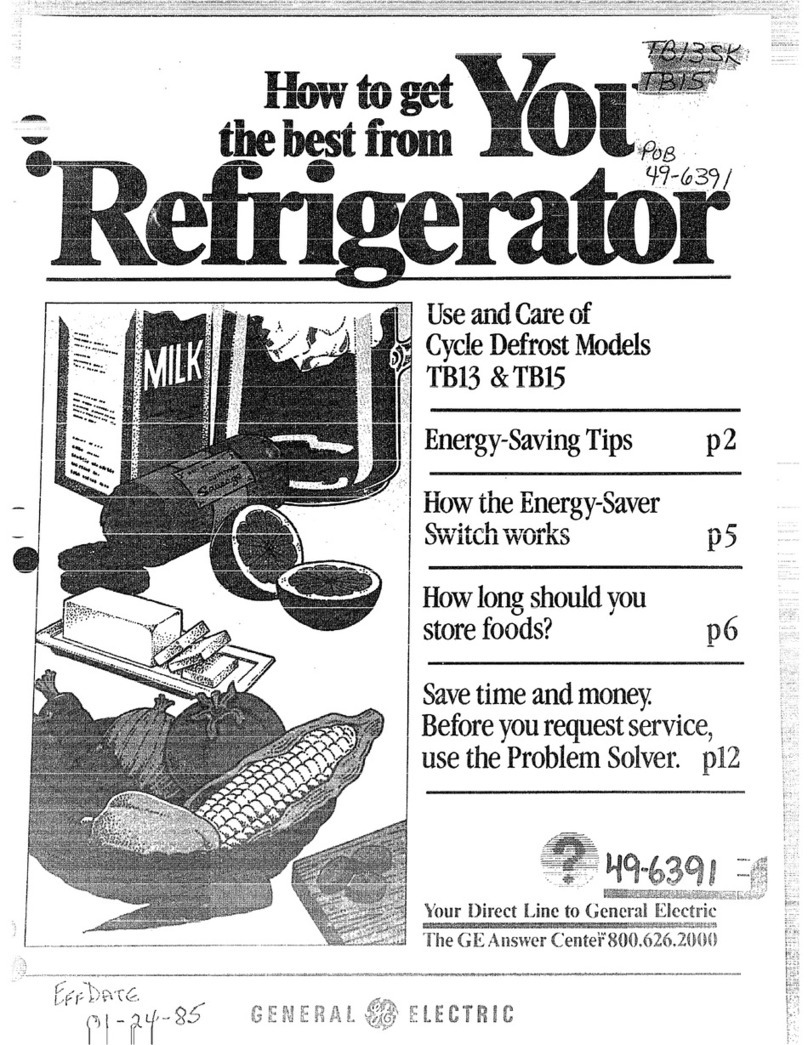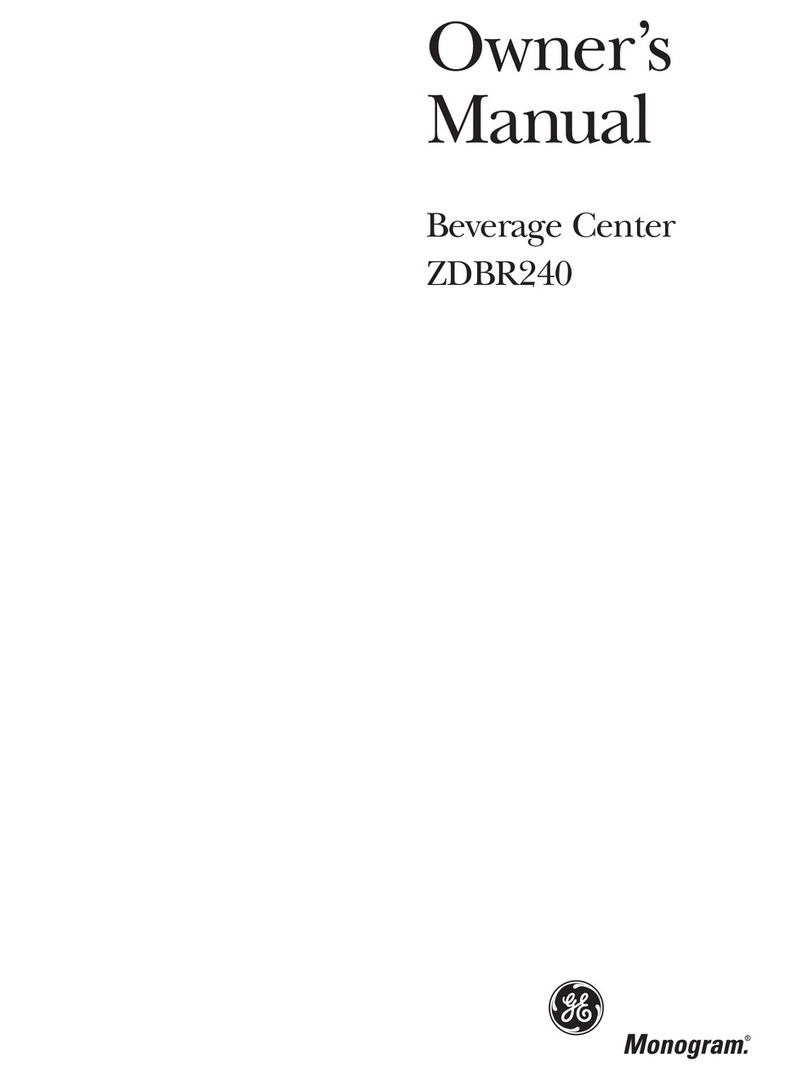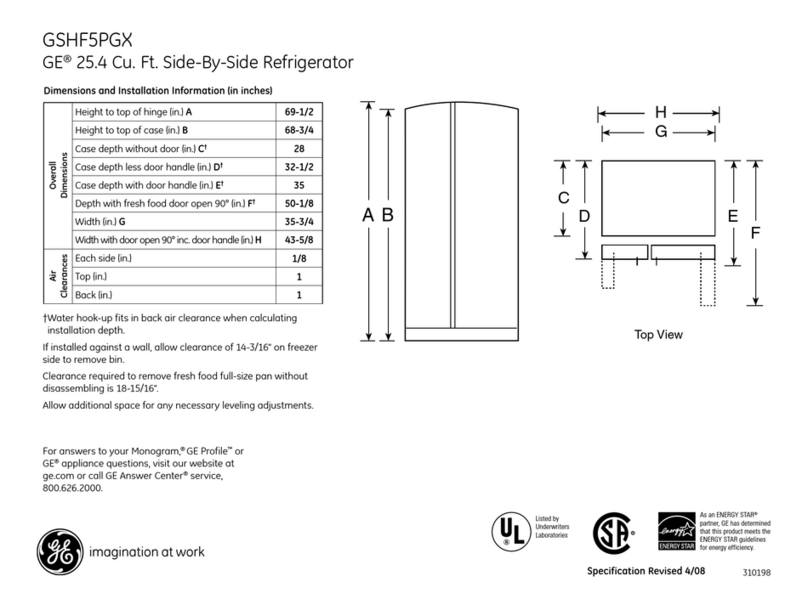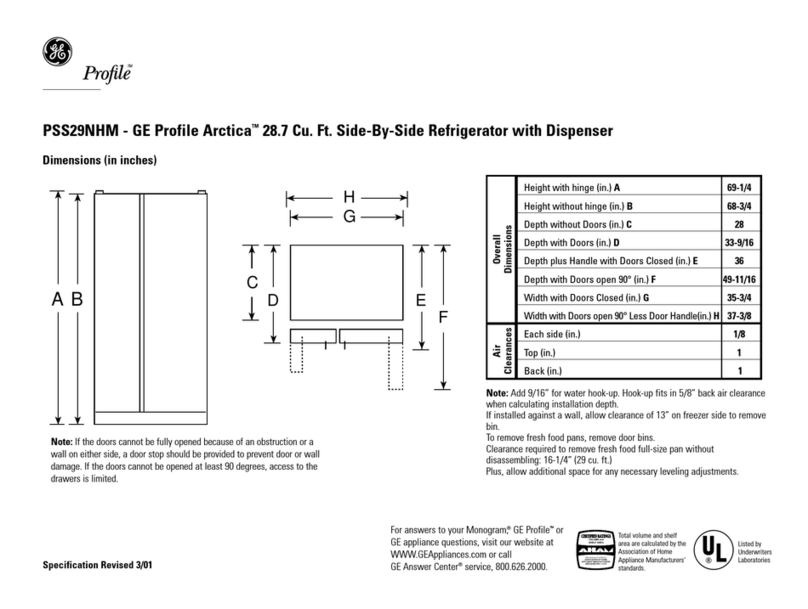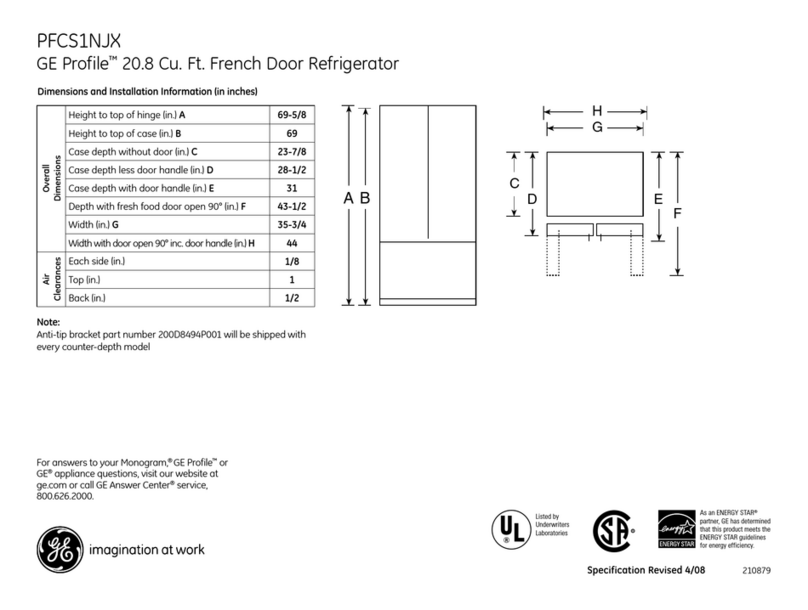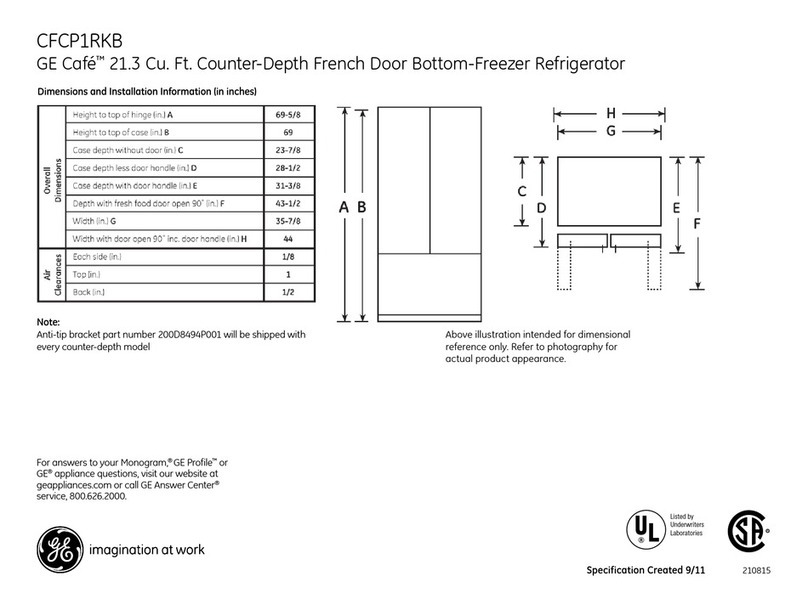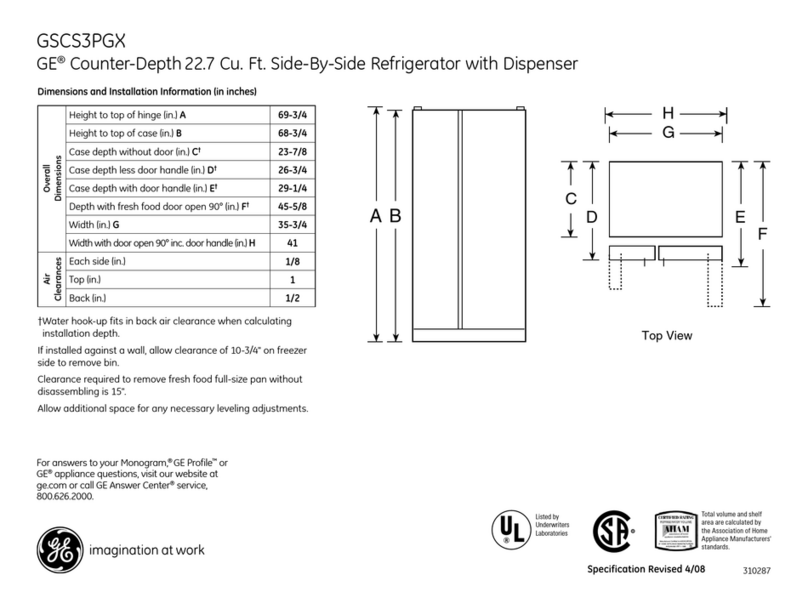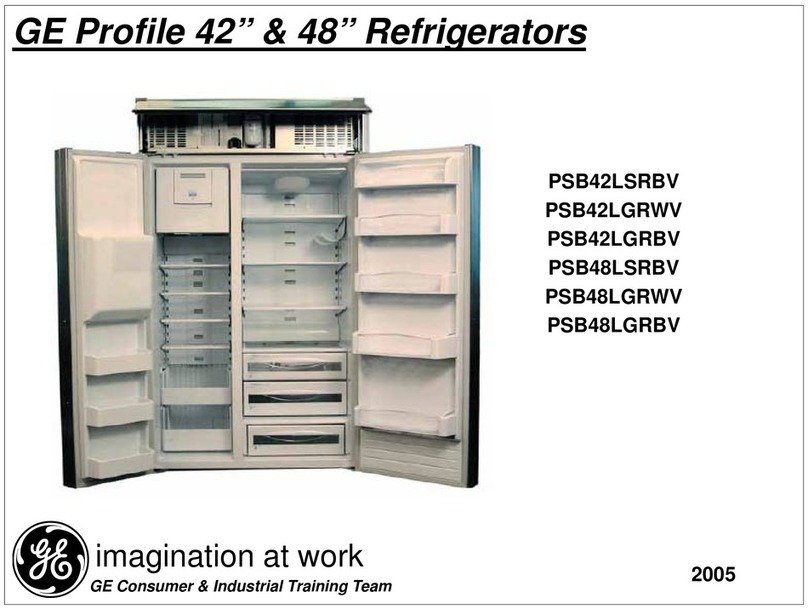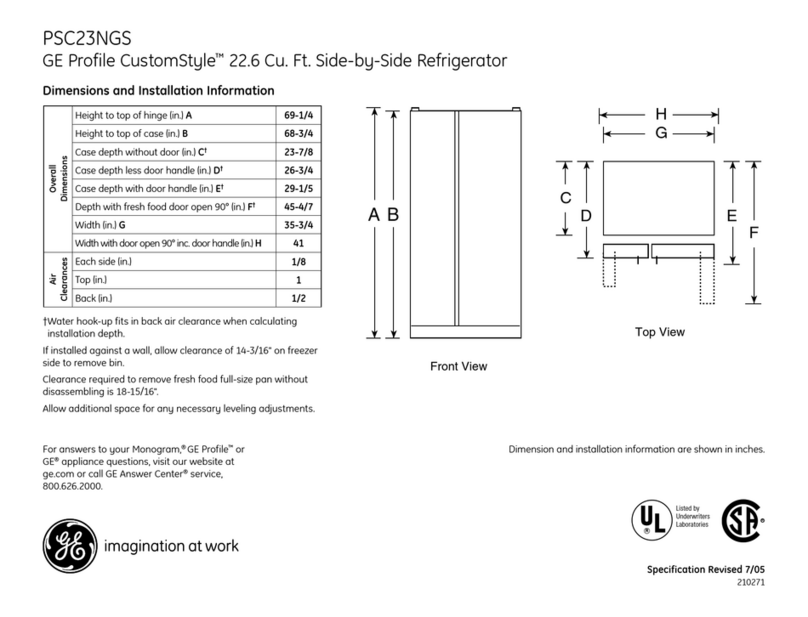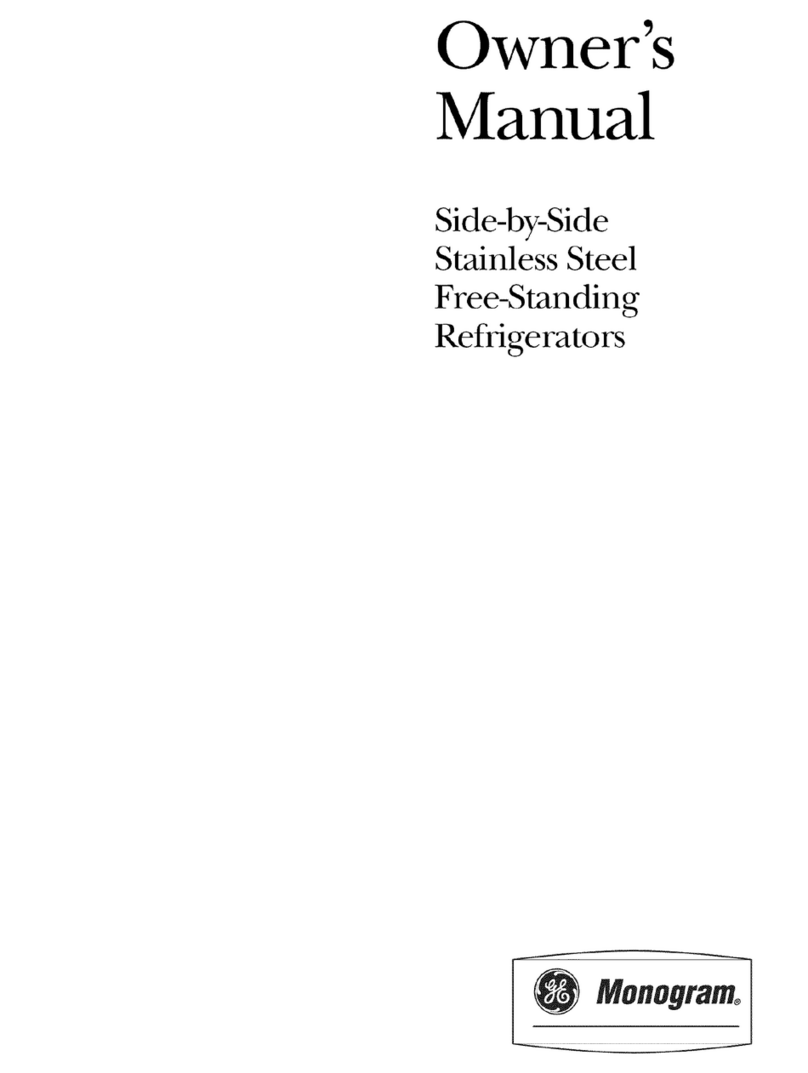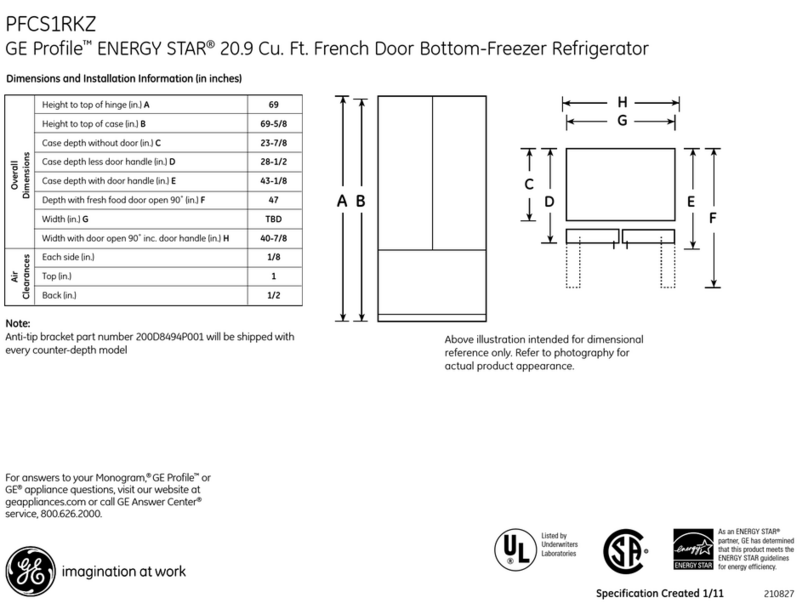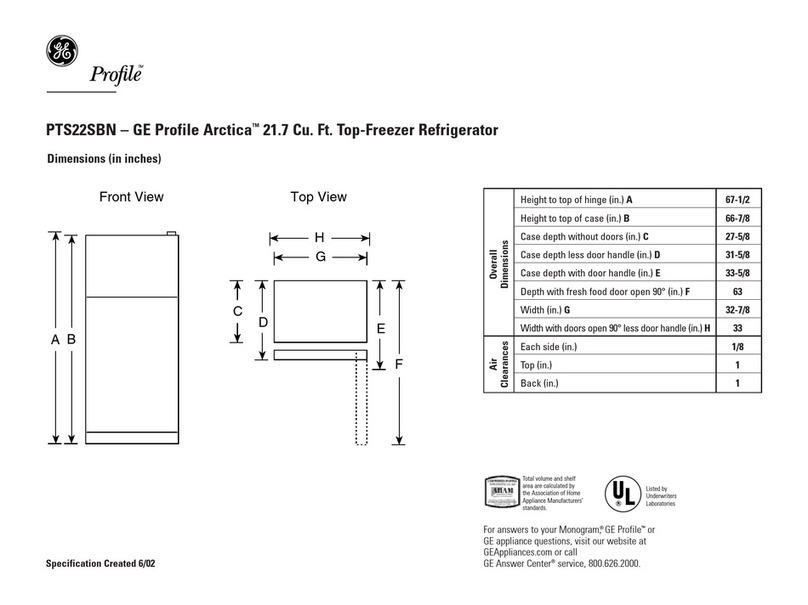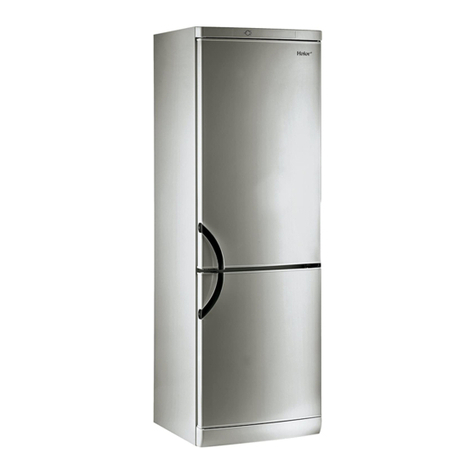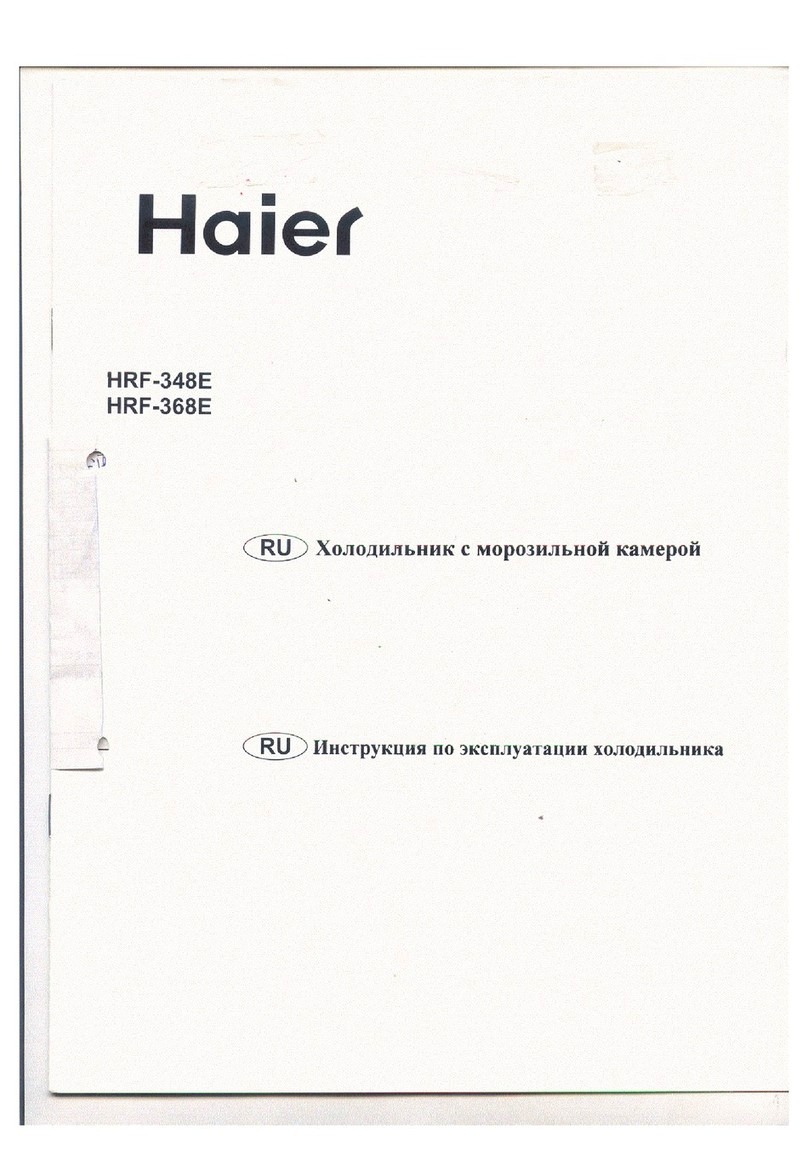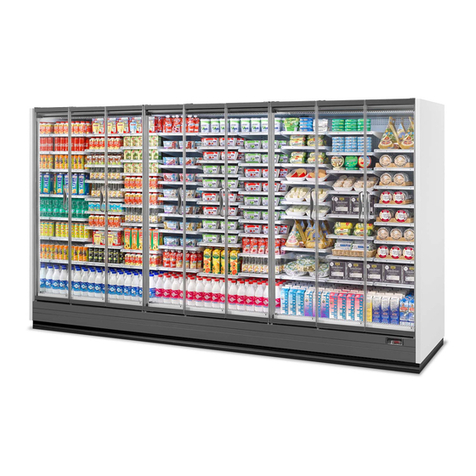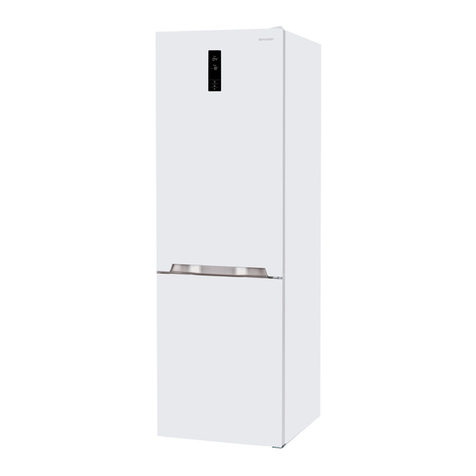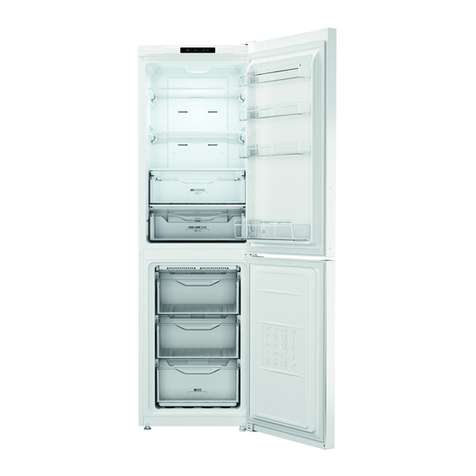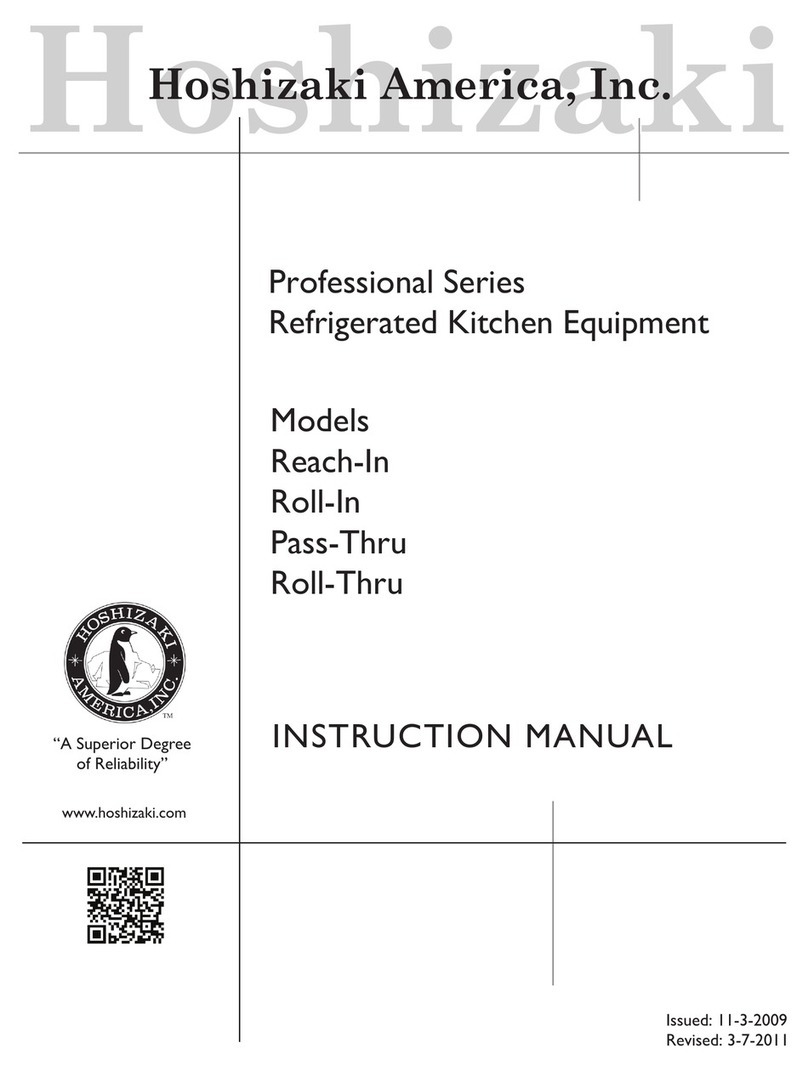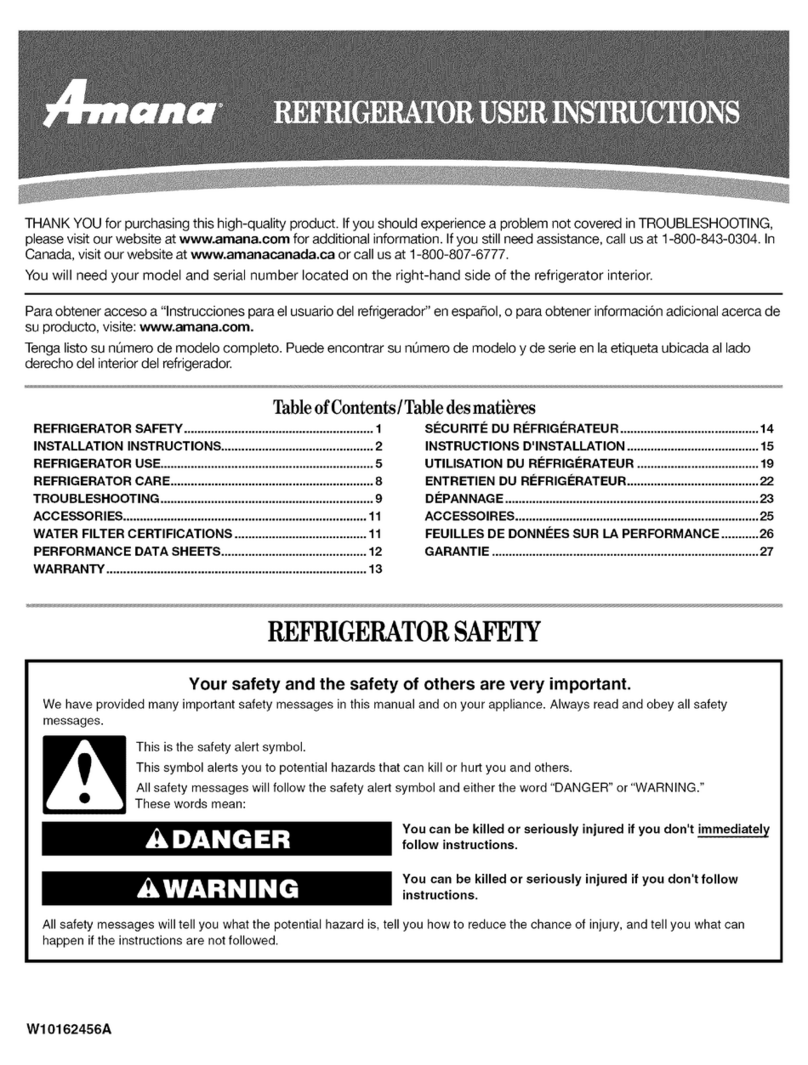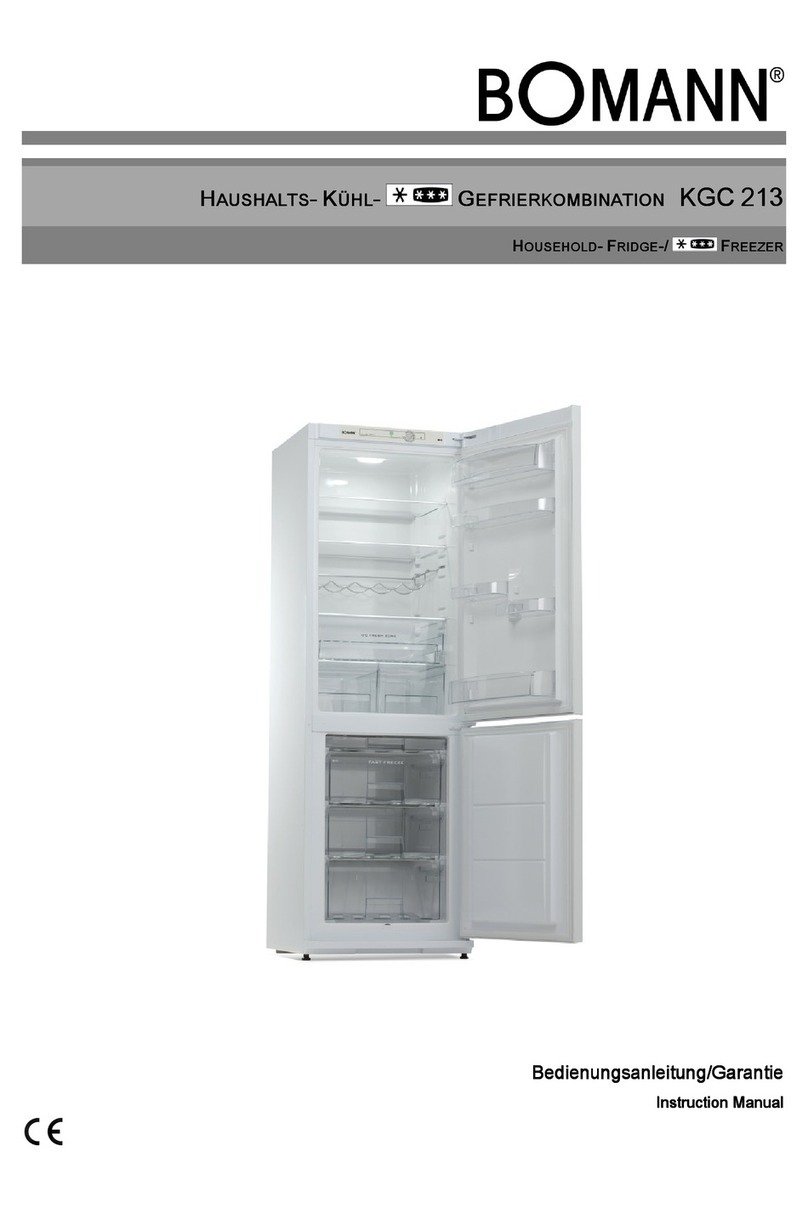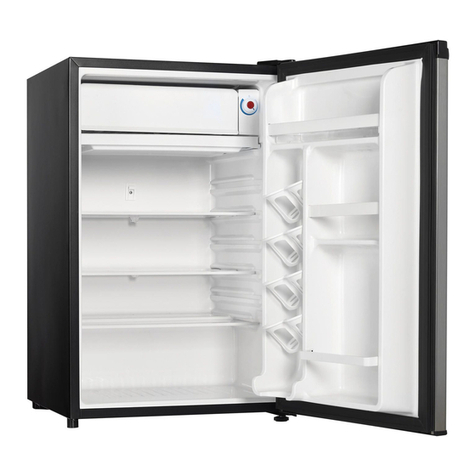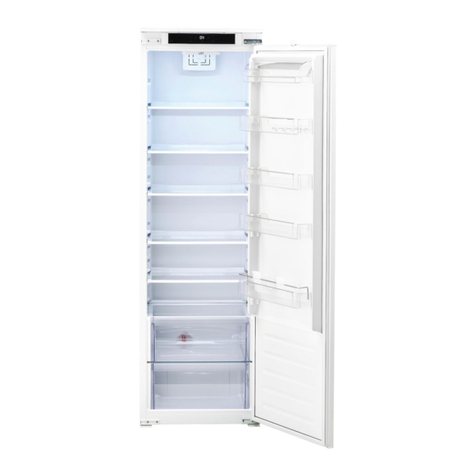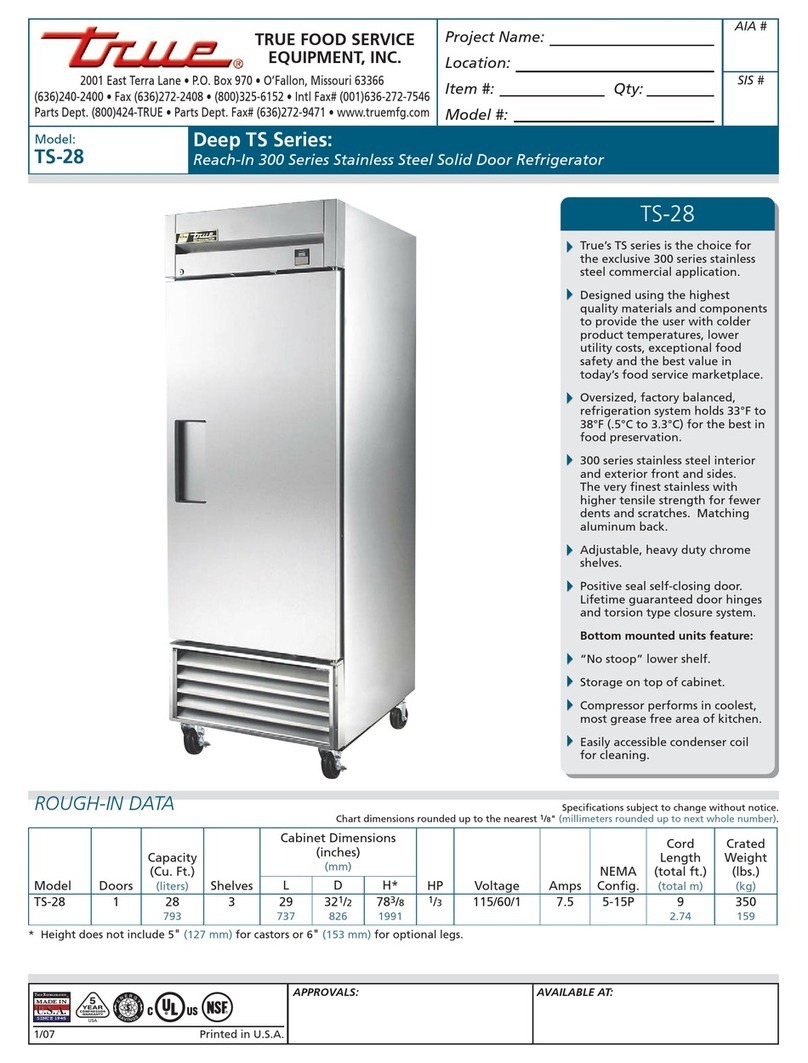Food
Storage Suggestions
Suggested storage times
for meat and poultry*
IN
REfRlGERAmR
Eatinp
quality
dmps
AT
after
time
shown
3!io
to
40T.
DAYS
Fresh
Meats
Roasts
(Beef
&
Lamb)
.......
3
to
5
Roasts(Pork
&
Veal)
........
3
to
5
Steaks(Beef)
..............
3
to
5
Chops (Lamb)
.............
3
to
5
Chops(Pork)
..............
3
10
5
Ground&Stew Meats
.......
1
to
2
Variety Meats.
.............
1
to
2
Sausage (Pork)
............
1
to
2
Processed
Meats
Bacon
...................
7
Frankfurters.
..............
7
Ham (Whole)
..............
7
Ham(Half)
................
3
to
5
Ham (Slices)
..............
3
Luncheon
Meats
...........
3
to
5
Sausage(Smoked)
.........
7
Sausage (Dry
&
Semi-Dry)
....
14
to
21
Cooked
Meats
Cooked Meatsand
Meat
Dishes
.............
3
to
4
Gravy
&
Meat Broth
.........
1
to
2
Fresh Poultry
Chicken &Turkey (Whole)
.... 1
to
2
Chicken(Pieces)
...........
1
to
2
Turkey (Pieces).
............
1to2
Duck
&
Goose
(Whole).
......
1
to
2
Giblets
...................
1
to
2
CookedPoultry
Pieces(Covered with Broth).
..
1
to
2
Pieces
(Not
Covered)
........
3
to
4
Cooked PoultryDishes.
......
3
to4
FriedChicken
..............
3
to
4
f
REEZER
IN
AT
0%
MONTHS
6
to
12
6
to
12
6to9
3
to
4
3
to
4
3to4
1to2
4
to
8
1
ch
1to2
1
to2
1to2
Freezing
not
recom-
mended.
2
to
3
2
to
3
12
9
6
6
3
6
1
4
to
6
4
(Other than
for
meats
&
poultry)
FREm
Most
fruits and vegetables
...........
.8-12
months
soups,
stew,
casseroles
............
.2-3
months
Lean fish
.........................
.6-8
months
Fatty
fish,
rolls
and breads,
Cakes, pies, sandwiches,
leftovers
(cooked),
Icecream (original carton).
..........
1
monthmu.
New
techniques are constantly being developed.
Consult the College or County Extension Service
or
your local Utility Company for the latest
information on freezing and storing foods.
'U.S.
Oepartment
of
Agriculture
Meats, fish and poultry purchased
fromthe store vary in quality and
age; consequently, safe storage
time in your refrigerator will vary.
To
store
unfrozen meats, fish
and
Always removestore wrappings.
Rewrap in foil, filmor
wax
paper
and refrigerate immediately.
poultry:
To
storecheese, wrap well with
wax paper or aluminumfoil, orput
in a plastic bag.
Carefully wrap to expelair and
help prevent mold.
Store pre-packaged cheese in its
own wrapping if youwish.
To storevegetables, usethe
vegetable drawers-they've been
designed to preservethenatural
moisture and freshnessof produce.
Covering vegetables with a moist
towel helps maintaincrispness.
As
a furtheraid to freshness,
pre-packaged vegetables can be
stored
in
their original wrapping.
Note: Specialfreshwcompartment
drawers (on models
so
equipped)
make
it
unnecessary to wmp cemin
foods which they've beendesigned
topreserve. Thesedrawersare
described
on
pages
8
and
9.
To
store
ice
cream-Fine-quality
ice cream,
with
high cream
content, will normallyrequire
slightly lower temperatures than
more "airy" already-packaged
brands with low cream content.
It willbenecessary
to
experiment to
determine the freezercompartment
location and temperature control
setting to keep yourice cream at
theright serving temperature.
The
rear
of the freezer compartment
is slightly colder thanthe front.
Tips
on freezing foods
There
are
three
essential requirements
forefficient home freezing.
1.
Initialquality. Freeze only top-
quality
foods.
Freezing retains
quality
and flavor; it cannot improve
quality.
2.
Speed. The quickerfruits and
vegetablesarefrozenafterpicking,
the better the frozen product will
be. You'll save time,
too,
with less
culling and sorting to do.
3.
Proper
packaging. Use food
wraps designed especiallyfor
freezing; they're readily available
at most food stores.
6
To freezemeat,
fish
andpoultry,
wrap well in freezer-weight foil (or
other heavy-duty wrapping material)
forming it carefully to the shapeof
the contents.This expels air. Fold
and crimpendsof the package to
provide agood, lasting seal.
Don't refreeze meatthat has
completely thawed;meat, whether
raw or cooked, canbe frozen
successfully only once.
Limit freezingof fresh (unfrozen)
meats or seafoods to numberof
pounds at a timeas follows:
TBX18 .............
.17
pounds
TBX20
.............
.19
pounds
For convenience.
..
Store like things together. This
saves bothtime and electricity
becauseyou can find foods faster.
Placethe oldest items up front
so
they can be used up promptly.
Use shelves on thedoor for most
often usedsauces and condiments.
Use the meat drawer, on models
so
equipped, for temporary storage
of meats youdonot freeze.
To
save money in energy
and food costs
Place mostperishableitems, such
as milk, creamorcottage cheese,
toward the rear of the topshelf, as
they will staycoldest in this part
of the fresh foodcompartment.
Cover moist foods with tight lids,
plastic filmorfoil.
Leaf
vegetables and fruits placed
in
drawers will last longer when
stored
in closed plastic containersor
wrapped in plasticfilm.
Do
not overload your fresh food
or freezer compartment with a lot
of warm foodat once.
Openthe door the fewest times
possible to saveelectricalenergy.
When goingout of town for
several days, leaveasfew perishables
.
%-?pssible in the refrigerator. If
your refrigerator has an icemaker,
move the icemakerfeelerarm to
the OFF(up)position and shutoff
water tothe refrigerator.
